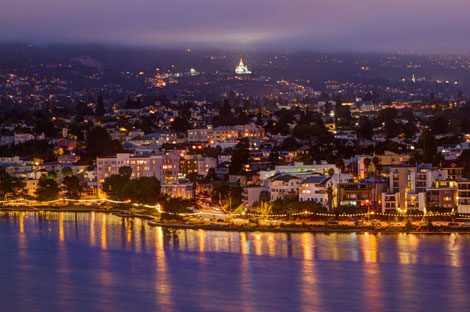A serial journal of cogent reflections and irreverent insights on the social effects of capitalism and the roots of partisan politics. Pairing prose with HDR photography and “flash points” drawn from current and historical perspectives, the author seeks to recover lost wisdom and courageous action beyond the shouting and noise of today’s headlines.
Chapter Five:
A Shining City on a Hill
Problems No More, USA, 1952-1956
In a dozen short years removed from FDR’s last State of the Union address, the economic landscape had changed dramatically, or so it seemed. The brilliant Robert L. Heilbroner, economist and economic historian, could write that what distinguished the capitalism of the United States from all others was its refutation of Marx’s assumption that government could not be an impartial arbiter. American democracy, he proclaimed, tolerated and allowed for an open discussion of class struggle without class warfare.
Heilbroner believed government could, and did, play a significant role in reconciling divergent interests — and this, Marx, the flawed observer, did not see. How could Marx, Heilbroner suggested, surrounded as he was by the Dickensian factories of England, Russia’s brutal condemnation of trade unions under the czar, monopolies officially championed in Germany, and the ineffectiveness of Italy and Greece to collect their own levied taxes on their respective business communities? The huge chasm between the rich and poor in Europe obscured any vision of reconciliation.
But not in America. Here was the shining city on a hill, to use Ronald Reagan’s attribution of America’s exceptionalism decades later. Here was a country that was neither frozen by a historical aristocracy nor closed to social mobility.

The expansion of the economy after the war seemed closer to Adam Smith’s Wealth of Nations than to some sourpuss guy named Marx, who at times couldn’t even leave his home because his coat and shoes were sitting in a pawnshop. Even a progressive intellectual like Mary McCarthy could write:
The mansions are torn down and the real estate “development” takes their place…. Class barriers disappear or become porous; the factory worker is an economic aristocrat in comparison with the middle class clerk … vast inequalities and dramatic contrasts are ceasing to exist.
~ Quoted in The Illusion of Unity in Cold War Culture by Alan Brinkley.
From out of inner-city tenements sprang planned communities, like Levittown in New York, and more generally the birth of the suburbs. Mass production strengthened its hold on construction, agriculture, livestock, and our general view of using natural resources. How we build our homes, grow our food, house our animals, and slaughter them all came increasingly under management with an eye to efficiency and surplus value. Under what was labeled free enterprise, incomes grew among the middle class, products expanded, and television emerged to entertain and enchant. What’s not to like? And in contrast, a dozen years of Joseph Stalin (1941–1953) solidified views not only of the error of communism as an economic model but also of the danger of collectivist strategies that masked a top-down concentration of political power.
In the United States, a new society seemed possible, suggesting a greater unity of interests and values traversing classes and regions. What was required was a good work ethic, a little imagination, and a can’t-say-quit attitude. Running for president in 1952 and 1956, General Dwight D. Eisenhower captured this zeitgeist while simultaneously repudiating Franklin Roosevelt’s call for an activist government. Eisenhower beat Adlai Stevenson, who had served under Roosevelt and attacked Eisenhower’s championing of the business community, twice — by large margins. Was it possible that capitalism had matured to the point where it was beyond booms and busts?
Next Week: The Organization Man Meets Radical Self-Interest, 1956 – 1960
Alisa took another path. She became a Hollywood screenwriter and wrote novels. She demanded reverence for her ideas, and her wild mood swings may have been influenced by the amphetamines that she took. She called herself Ayn Rand and in 1957 published her magnum opus, Atlas Shrugged.



0 Comments